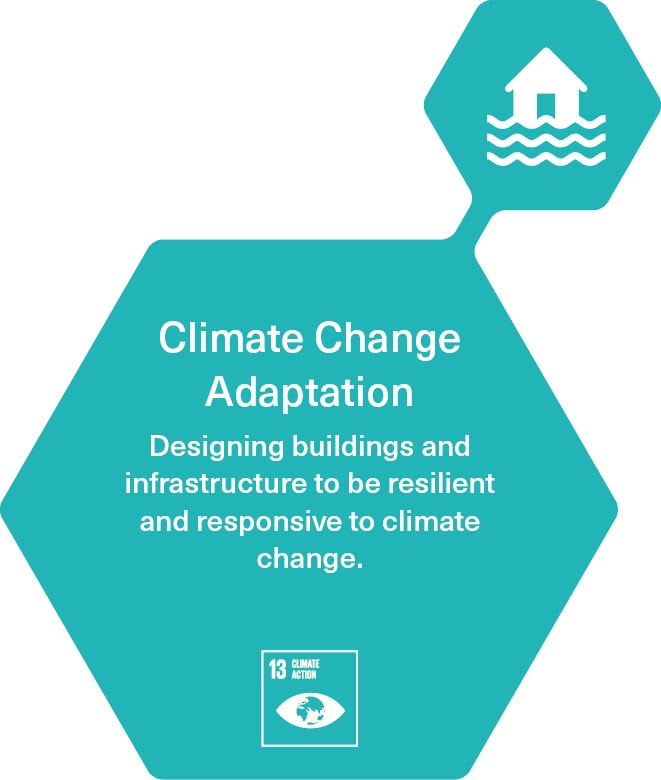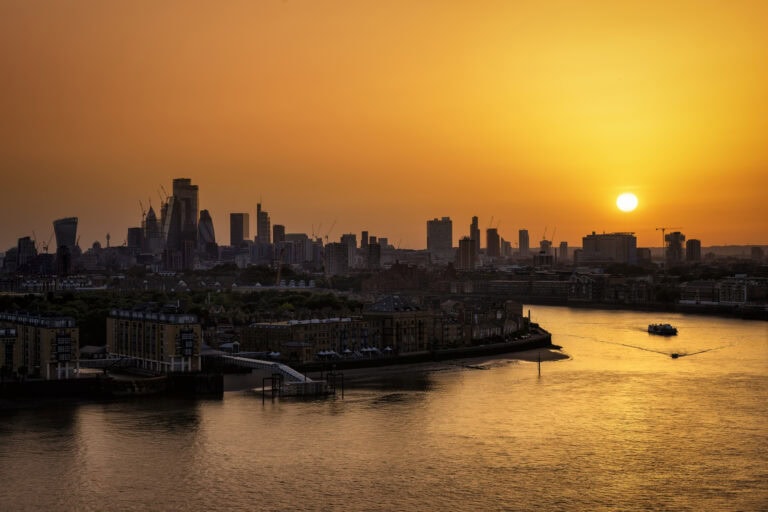Building Resilience: Climate change adaptation in the built environment

The forecast for the year ahead suggests that the recent trend of record-breaking summer heat shows no signs of slowing. And yet, it’s not all ice creams and sandcastles. 2018 brought with it a slew of extreme weather, from summer heatwaves across Europe to the deadly flooding in India. Many of these events can be attributed to climate change and all carried severe consequences for the people affected. As the reality of the climate we are creating for ourselves becomes apparent, we must consider how our buildings and cities can be adapted to ensure they remain fit for the future. The recent UKGBC Climate Resilience Roundtable event here in Birmingham spurred some very interesting discussions on the topic.
A typical building constructed today will still be in use in 2070 and beyond, but the climate it encounters will have changed significantly. Many key elements of that building’s design are based on historic records of climate data that are, even now, several decades out of date. At best, this means they may not function as intended and at worst, they could be downright dangerous. How will London’s building’s stay cool when summers are 6°C hotter than they are now? How will Birmingham cope with a third more rain falling during the winter? How will Edinburgh manage 100-year extreme sea levels returning every 10 years? The short answer is without adaptation, they won’t. The construction industry must wake up to the fact that our climate is already changing and, at the very least, acknowledge the risks that this poses to the buildings we design, deliver and occupy.
Cundall’s Sustainability Roadmap identifies climate change adaptation as one of our six key priority impact areas. We recently carried out a substantial piece of research to quantify the impacts of climate change in the areas we operate. Not only does this put us in a better position to understand what some of these risks might be, but more importantly it has highlighted the significant work that needs to be done across the industry to ensure climate resilience is built into every project. As a global engineering consultancy and a leader in sustainable building design, we have both an opportunity and a responsibility to deliver buildings that are resilient and responsive to climate change.

Even armed with an understanding of what the future climate might entail and the risks it poses to our buildings, there is only so much one organisation can do. We can inform our clients of the risks, but without legislation, climate change is too often secondary to the other risks and pressures affecting buildings. And if a client does want to design for these risks, data and guidance that can be used by designers is either not available or does not cover the full spectrum of building design. The barriers to building resilience are many, requiring a concerted effort from players across the industry to overcome. So here is our call to arms.
Clients: Demand buildings which are fit for the coming century. Ask your consultants and contractors what they are doing to ensure the building you are getting will continue to perform as intended throughout its life. Design for an agreed emissions scenario – we recommend a 2°C global temperature rise as a minimum with an understanding of the implications of a 4°C rise.
Consultants: Think about the climate in 20-30 years. Will your design still perform as intended and how will your clients feel when they do not? Talk to them about the risks and encourage them to embed climate change adaptation in their brief.
Institutions: Support consultants with research, design guidance and CPD. Without this, it simply cannot be embedded into the design process, and resilience will remain a niche service. Commission further academic research to fill in the blanks and extend beyond just physical risks to allow consideration of other less tangible impacts.
Policy makers: Embed climate change adaptation into the upcoming revision of the Building Regulations, for example by mandating the use of future weather data and consideration of adaptation strategies. All buildings should have some degree of resilience, which must be driven by policy.
In the face of our rapidly changing climate, it is no longer acceptable to design buildings for 60 years in the future using climate data from 60 years in the past. Clients, designers, institutions and policy makers – we must all play our role in building a resilient world, fit for the future.
UKGBC upcoming and existing work on climate resilience
UKGBC is a Project Partner on the Greater Manchester IGNITION project which will establish the financial mechanisms to deliver green infrastructure, a climate adaptation solution. For more information on the project see here.
On June 19th we are running a workshop to identify what the ambitions should be for the UK built environment sector regarding climate resilience and ecosystem services and what UKGBC can do to best enable the meeting of these ambitions. We wish to ensure a spread of stakeholder types so if you would like to attend please register your interest here.
See our climate resilience project page here
See our climate resilience awareness raising resource page here
To support future work on this vital topic we are looking for sponsorship, to find out more contact Alastair Mant.
Related
Building the Movement ahead of COP28

What learnings can we take from the UK Climate Resilience Programme?

What is it like to measure the physical risk of built assets?

How the urban heat island effect makes cities vulnerable to climate change

